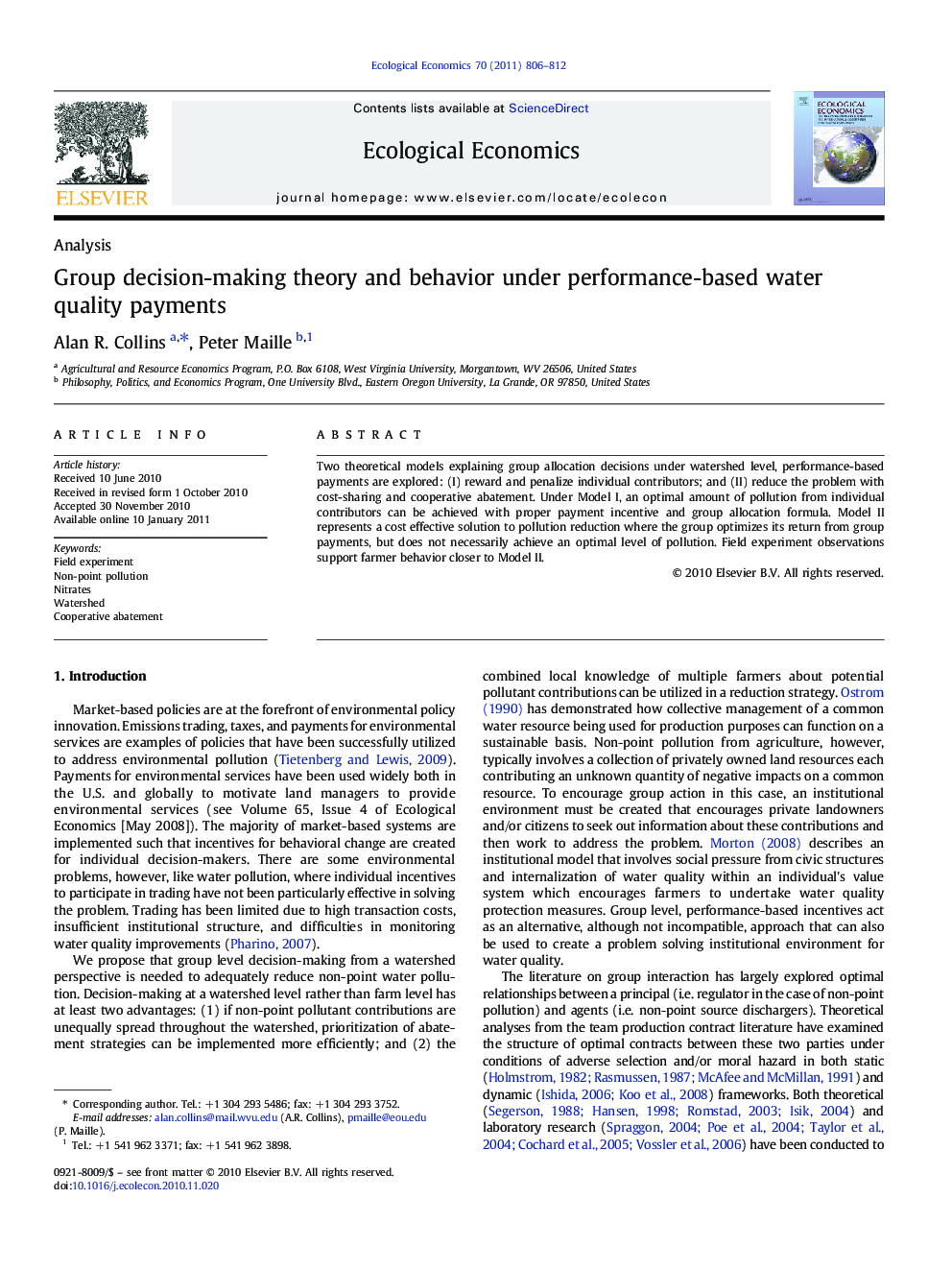| Article ID | Journal | Published Year | Pages | File Type |
|---|---|---|---|---|
| 5050787 | Ecological Economics | 2011 | 7 Pages |
Two theoretical models explaining group allocation decisions under watershed level, performance-based payments are explored: (I) reward and penalize individual contributors; and (II) reduce the problem with cost-sharing and cooperative abatement. Under Model I, an optimal amount of pollution from individual contributors can be achieved with proper payment incentive and group allocation formula. Model II represents a cost effective solution to pollution reduction where the group optimizes its return from group payments, but does not necessarily achieve an optimal level of pollution. Field experiment observations support farmer behavior closer to Model II.
Research Highlights⺠Two theoretical models explain group responses to watershed level payments. ⺠Reward and penalize (Model I) achieves an optimal amount of pollution. ⺠Reduce the problem (Model II) represents a cost effective solution. ⺠Field experiment observations support farmer behavior closer to Model II.
